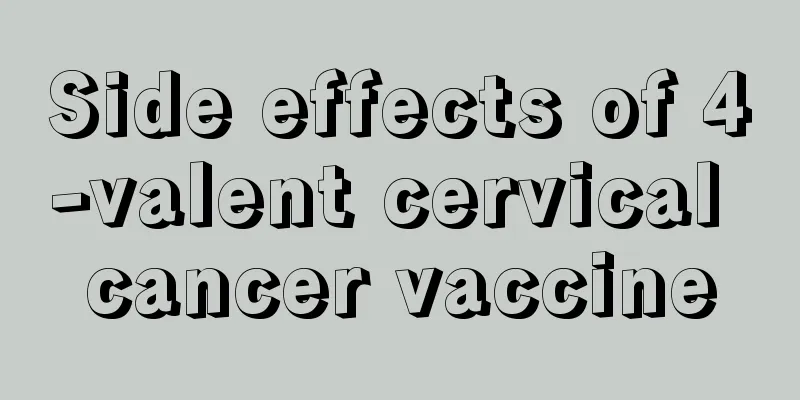Side effects of 4-valent cervical cancer vaccine

|
Because the cervical cancer vaccine has been in development for a relatively short period of time and has side effects, some patients may have severe reactions, but the vast majority of people will not have any significant reactions. For example, for the quadrivalent vaccine, many people reported fever, skin allergies, itching, and gastrointestinal reactions, but no more serious reactions. Therefore, this vaccine is relatively safe. If there is still an opportunity to get vaccinated and it is suitable for you, try to get the quadrivalent vaccine. It is effective against 6, 11, 18 and 16 virus infections. And 70% of cervical cancer is caused by infection with types 16 and 18. Therefore, the injection of quadrivalent vaccine can prevent 70% of cervical cancer. If there is still a chance to inject, there is no need to worry about side effects. If they occur, they are isolated phenomena and are relatively easy to deal with. The most common side effects of the quadrivalent cervical vaccine are rash, itching, low-grade fever, swelling, pain, and lumps at the injection site. Some may experience digestive tract reactions, such as nausea, vomiting, and abdominal pain. At this stage, this type of vaccine is still relatively safe. The general age for vaccination is between 20 and 45 years old. But not everyone is suitable for vaccination. Before getting the vaccine, you must do an HPV test. Only if the test result is normal and you are not infected with this virus, can you get the vaccine. Therefore, it is recommended to get the vaccine as soon as possible, preferably before having sex. Due to this type of viral infection, it is mainly transmitted based on sexual transmission. When getting vaccinated, try to choose a time when your immune system is better. After vaccination with the quadrivalent cervical vaccine, it can not only prevent cervical cancer, but also prevent the occurrence of genital warts. However, many patients have experienced some side effects after vaccination, mainly manifested as local swelling and pain. Some patients will also have headaches, nausea and vomiting, and some patients will experience dizziness. Therefore, patients should be observed for 15 minutes after vaccination before leaving. The quadrivalent HPV vaccine is used for women between the ages of 20 and 45. Before getting the cervical vaccine, it is best to do a cervical liquid-based cytology test and cervical human papillomavirus infection screening. In addition to cervical precancerous diseases, women with a family history of cervical cancer can receive protective injections as early as possible. |
<<: The exact location and function of milk
>>: Teaching steps for correct breastfeeding posture
Recommend
Can drinking milk help girls enlarge their breasts?
It is recommended that everyone drink milk every ...
How to take care of yourself after myomectomy
When it comes to uterine fibroids, everyone shoul...
What medicine is effective for irregular menstruation and cold uterus
Menstrual irregularities caused by uterine cold c...
I haven't had my period yet 36 days after the abortion.
Abortion is a type of artificial abortion surgery...
When will the leucorrhea increase?
Discharge is a secretion unique to women. It is a...
Can breast cysts become cancerous?
Breast cysts may become cancerous, especially whe...
Toothache is not a disease? Be careful of oral bacteria "getting into your head" and causing brain abscesses that can be fatal!
As the saying goes, "Toothache is not a dise...
Pregnant woman has severe pain on the right side of her lower back
After a woman becomes pregnant, in order to ensur...
How is invasive squamous cell carcinoma of the cervix treated?
Invasive squamous cell carcinoma of the cervix is...
Breast lumps in teenage girls
In life, some young girls may suspect that they h...
What suppository is best for cervical erosion?
For many women, it is easier to suffer from some ...
Standard height and weight comparison table for women
Weight standard is one of the key indicators to r...
Why does my face swell during menstruation?
Menstruation is a normal physiological phenomenon...
3 months pregnant belly bulge lying flat
Fetal movement is something that every pregnant m...
Nipple changes during early pregnancy
Many people who have been pregnant know that brea...









